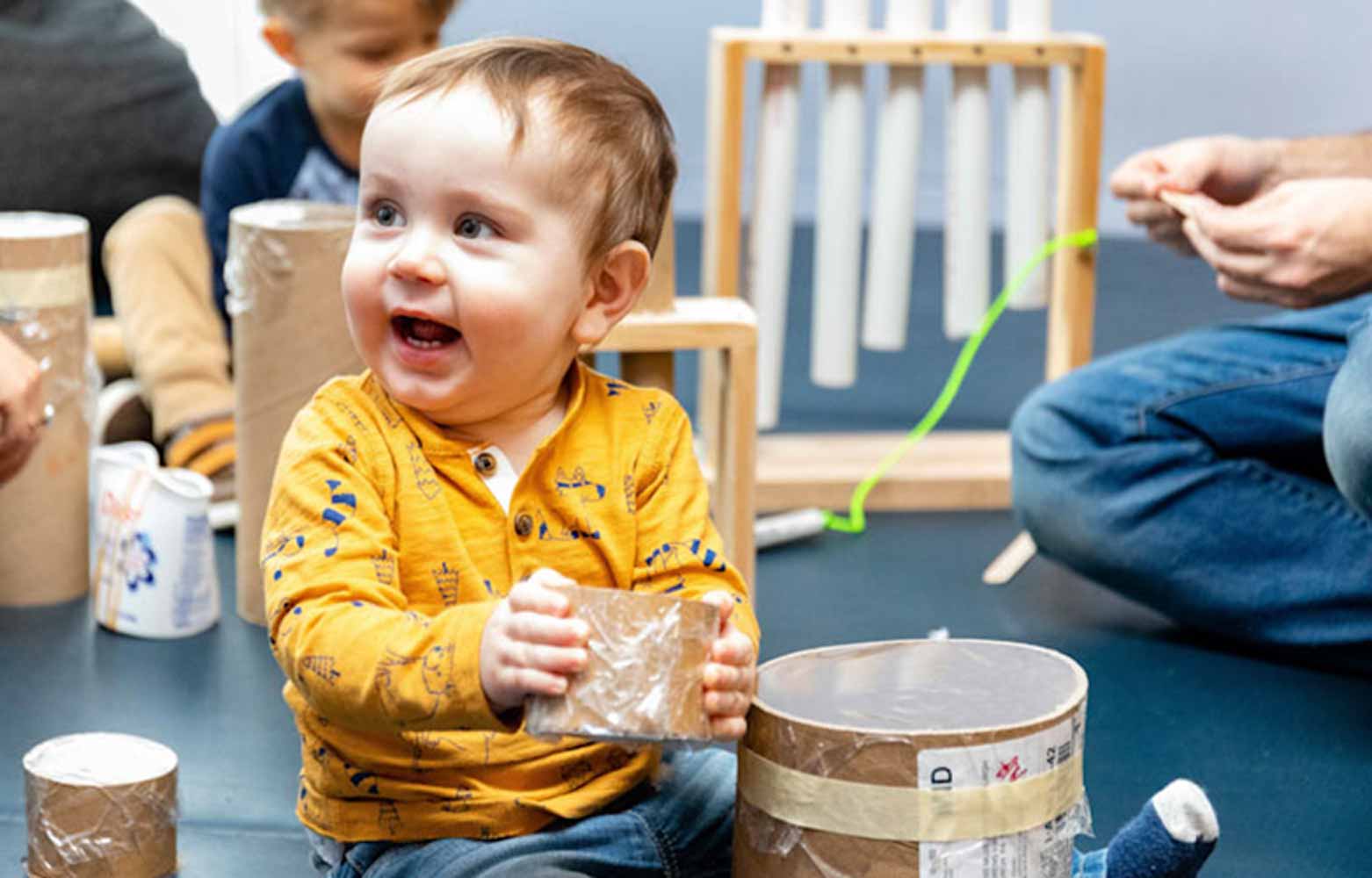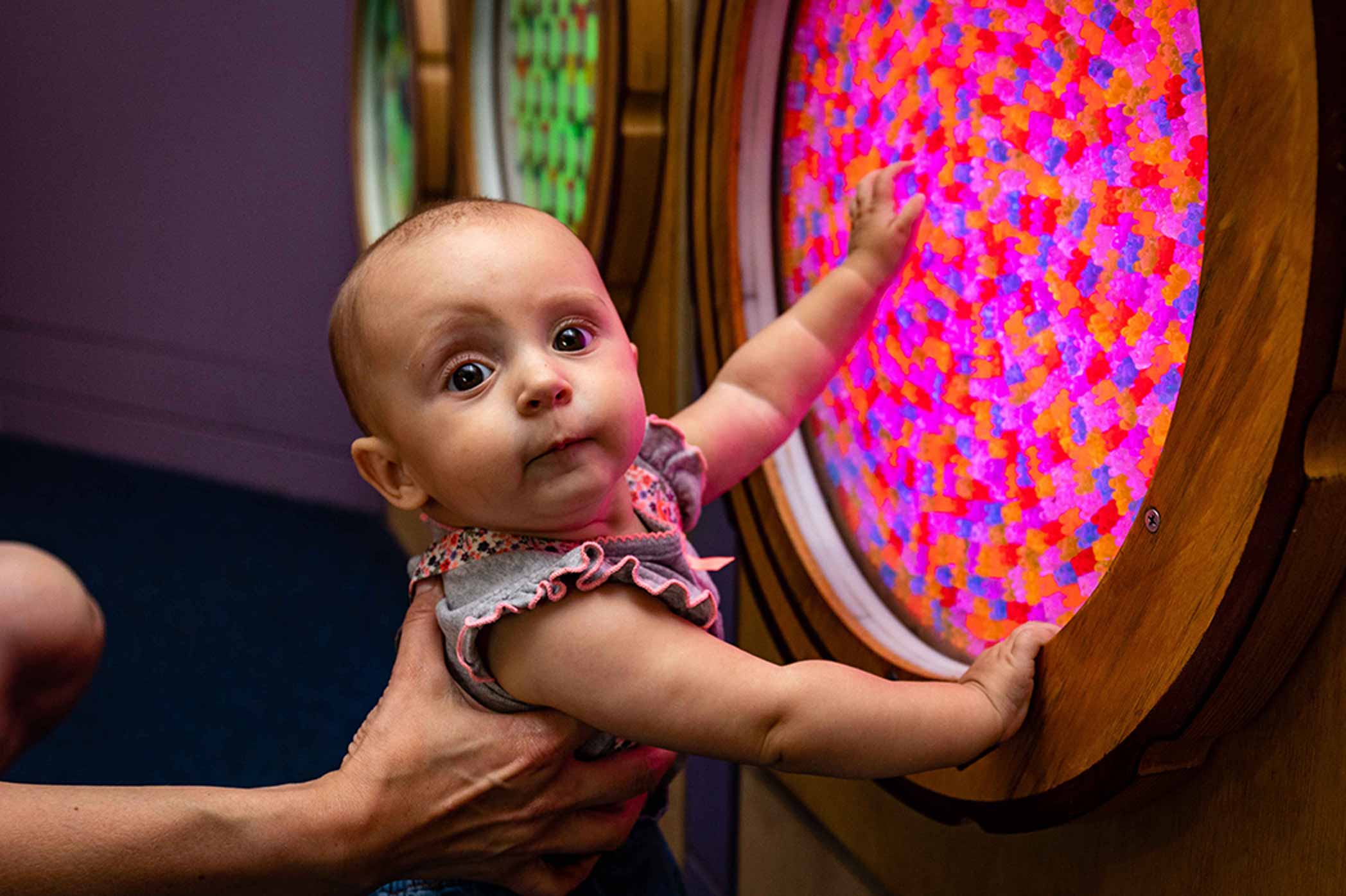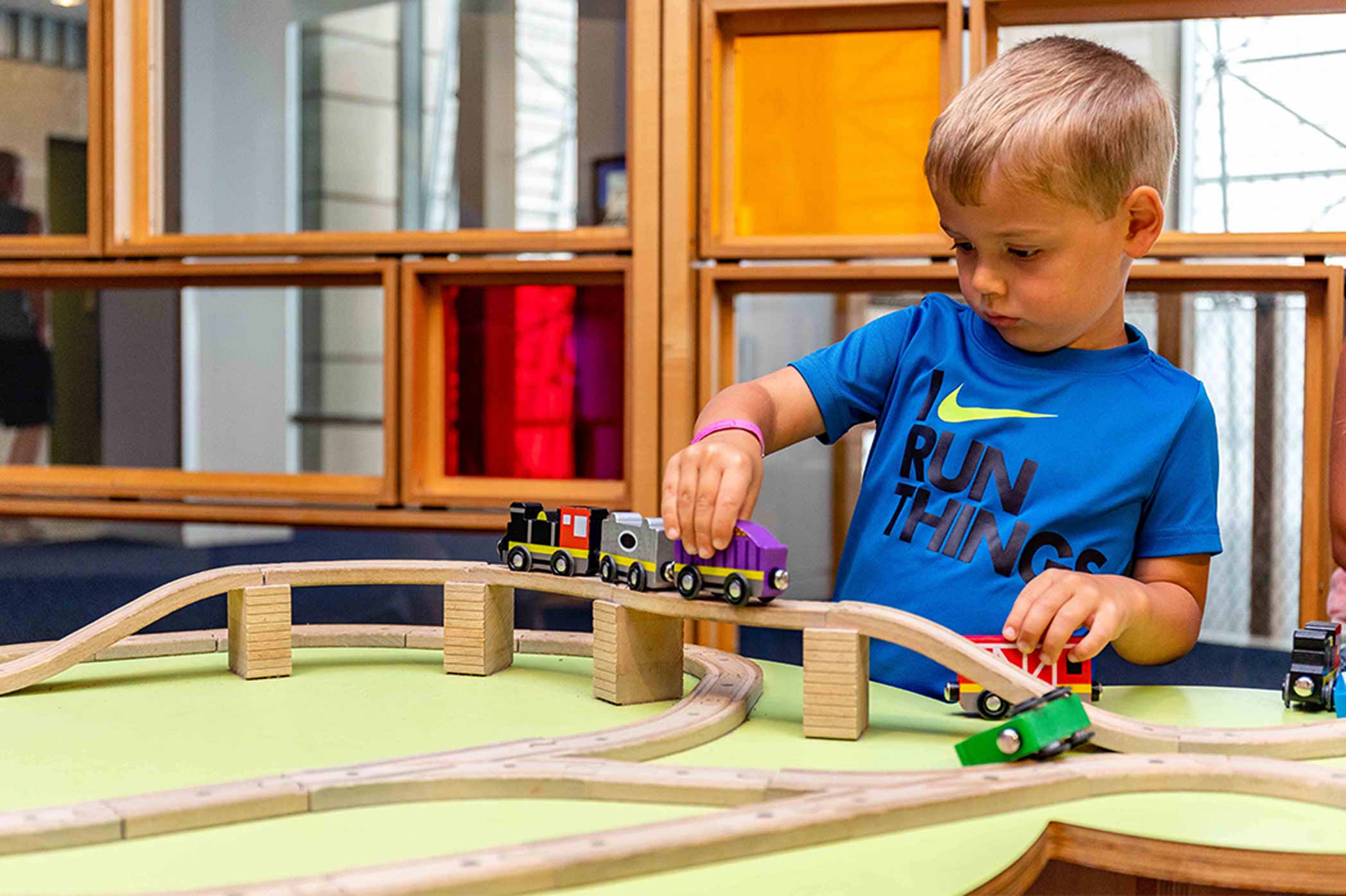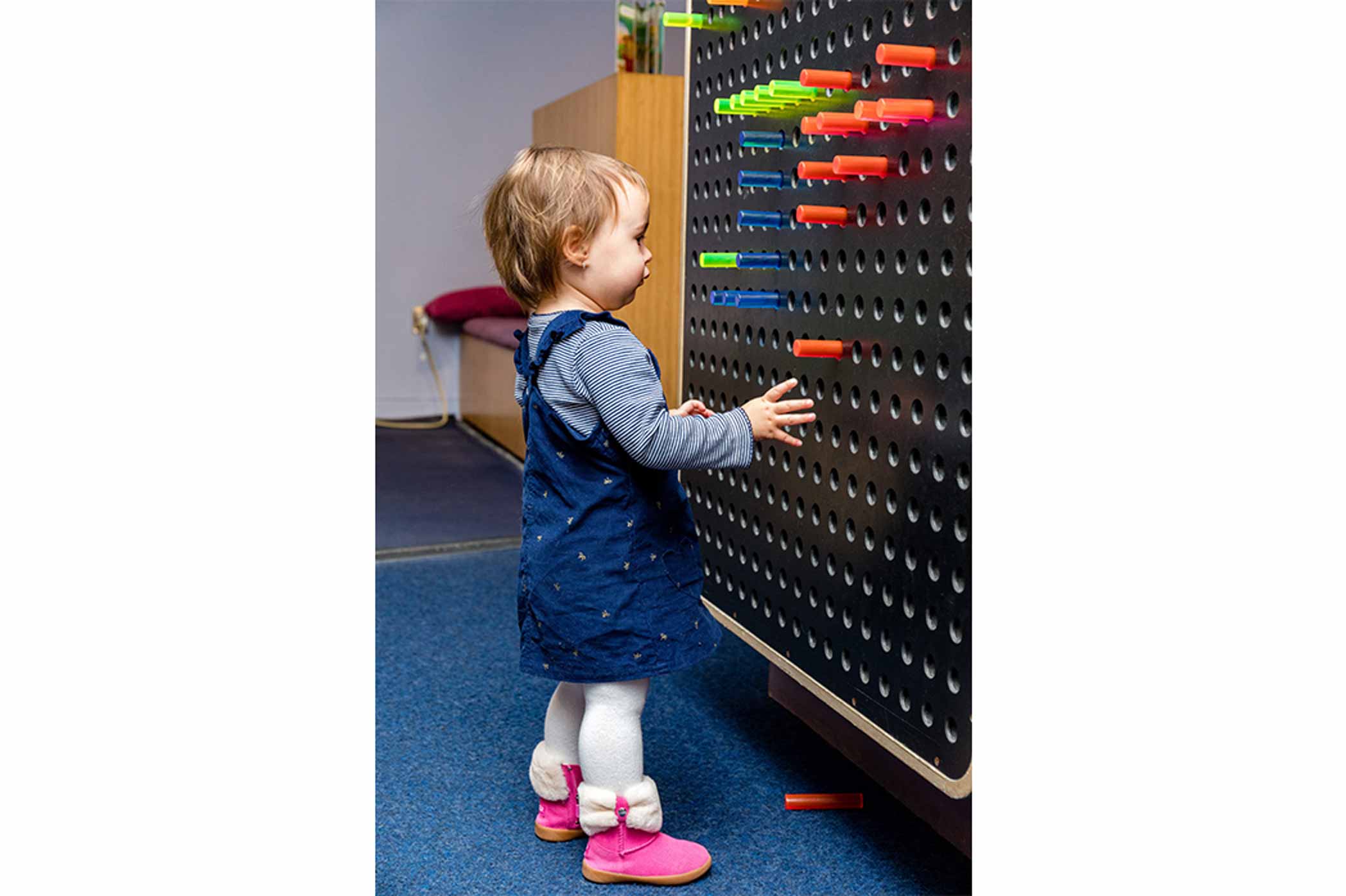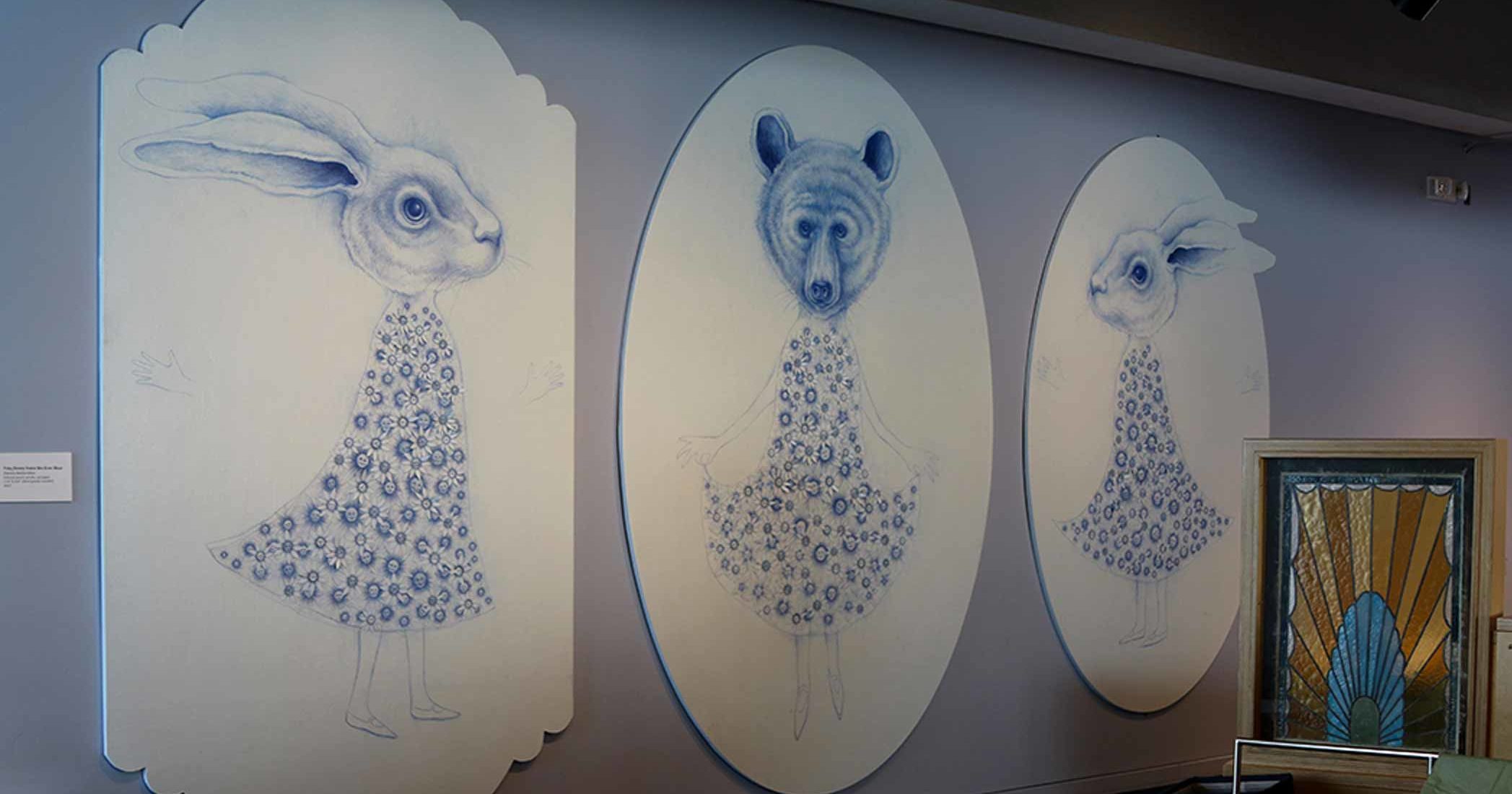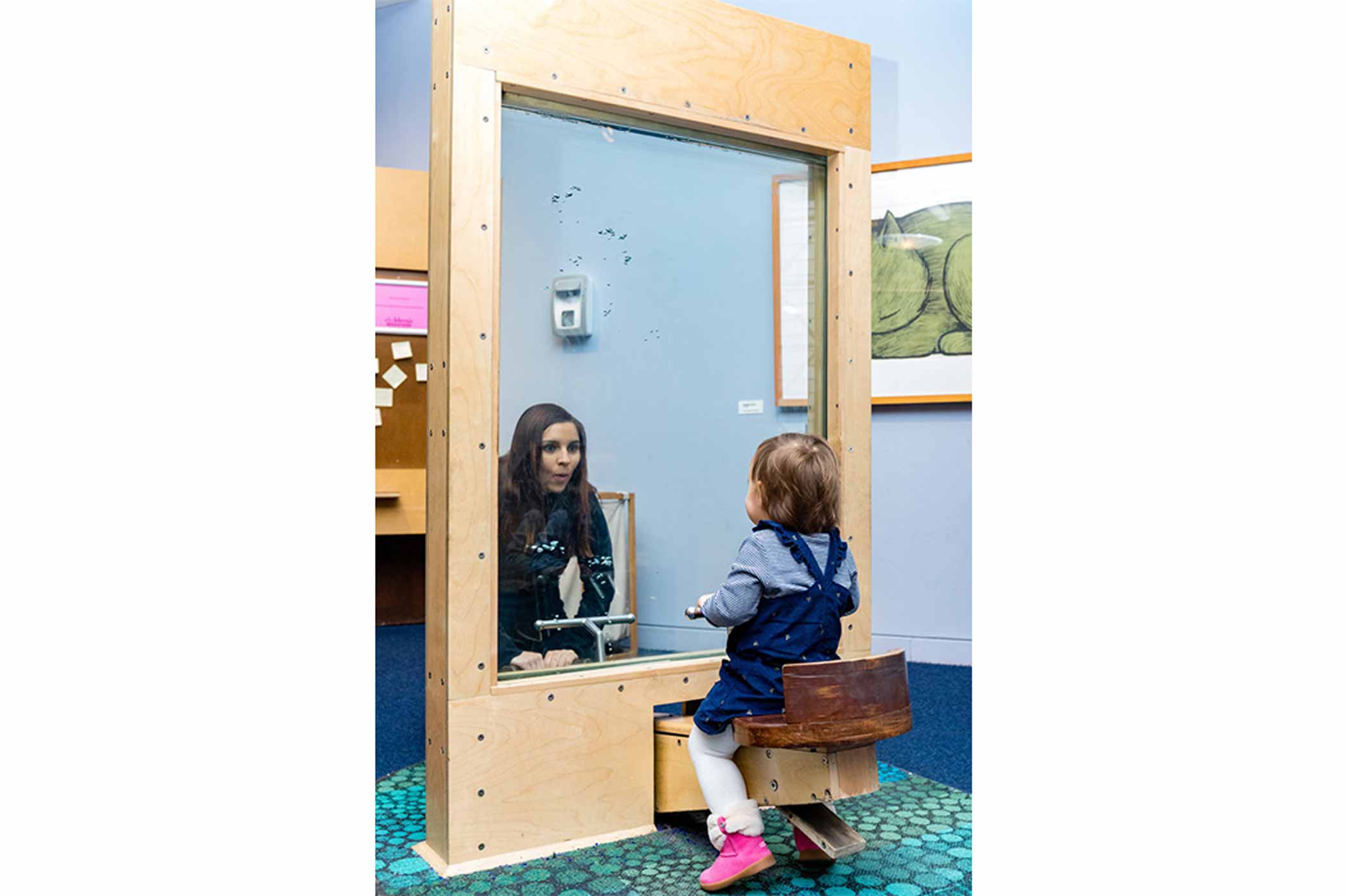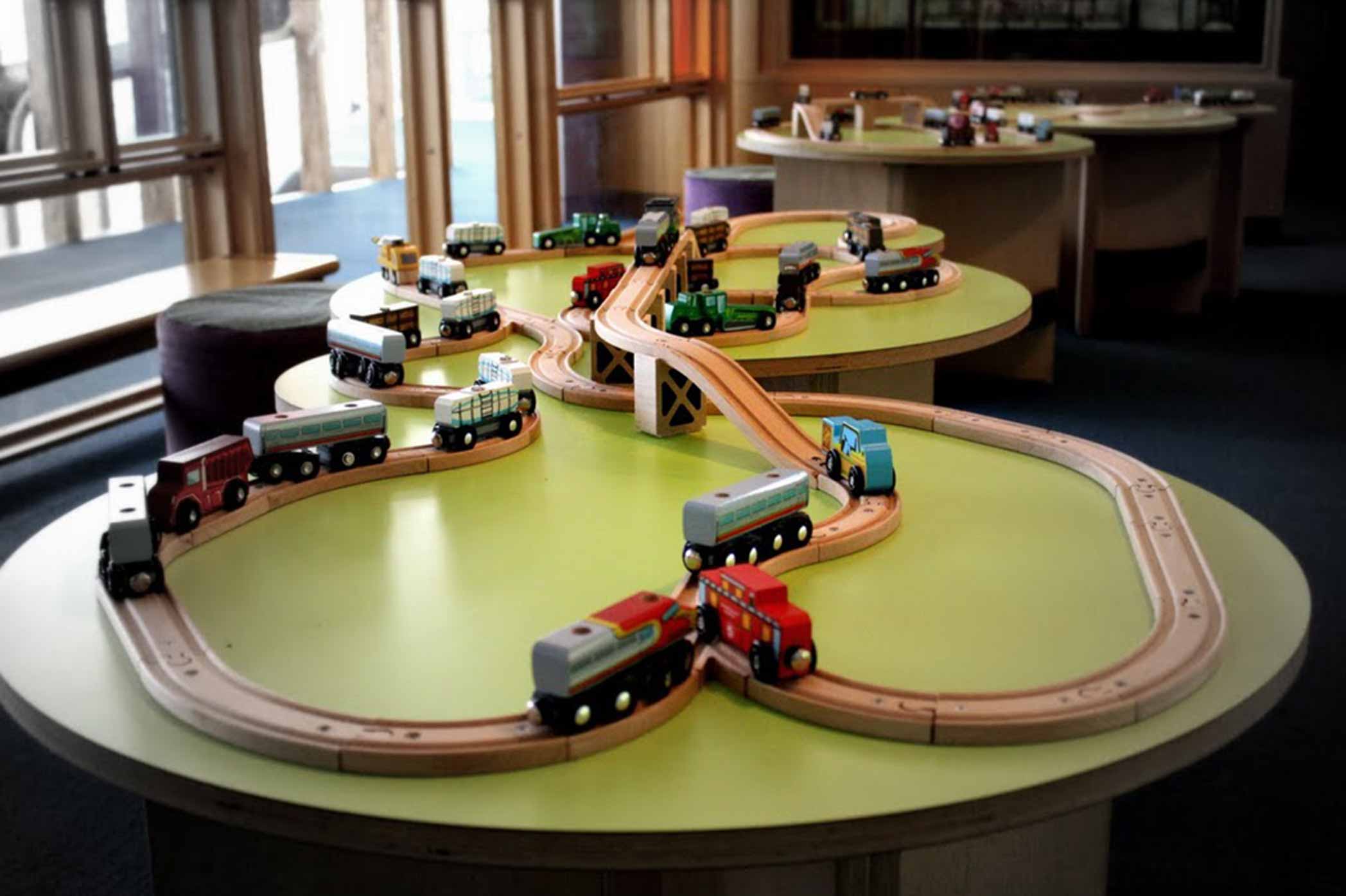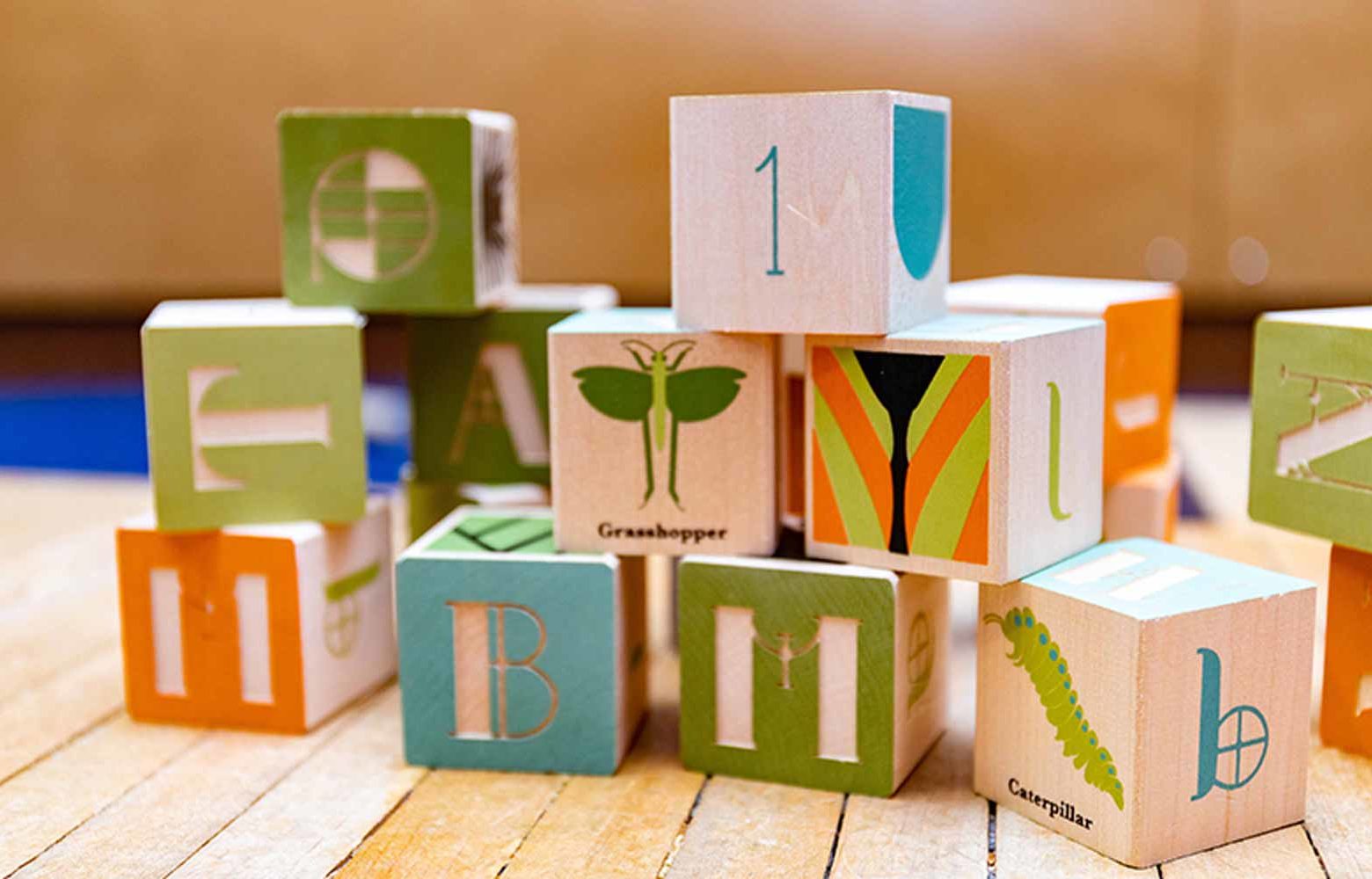tips for before and after your visit
change your perspective.
Get on the floor. Small children see the world differently. Put yourself at their level in the Nursery and see the exhibit and its components from their perspective. This will give you a better understanding of how to help facilitate play with your young child in the exhibit.
try new things.
If you have visited the Museum before, think of new ways to approach old favorites. Add storytelling to the Train Tables — ask what the train is doing; help put words to actions; then put the actions together to form a story. Introduce math and geometry to the block area by counting, creating patterns and talking about shapes
explore cause and effect.
Investigate how the different Light Circles spin. What is different? Explore the 9-foot Ball Maze. What do you notice when you place the ball in different locations on the track?
have a quiet moment.
Take the time to relax. Visits to the Museum are fun but can be tiring. Use some of the quiet spots in the Nursery to sit together and read a story or talk about your visit.
Get on the floor. Small children see the world differently. Put yourself at their level in the Nursery and see the exhibit and its components from their perspective. This will give you a better understanding of how to help facilitate play with your young child in the exhibit.
If you have visited the Museum before, think of new ways to approach old favorites. Add storytelling to the Train Tables — ask what the train is doing; help put words to actions; then put the actions together to form a story. Introduce math and geometry to the block area by counting, creating patterns and talking about shapes
Investigate how the different Light Circles spin. What is different? Explore the 9-foot Ball Maze. What do you notice when you place the ball in different locations on the track?
Take the time to relax. Visits to the Museum are fun but can be tiring. Use some of the quiet spots in the Nursery to sit together and read a story or talk about your visit.


